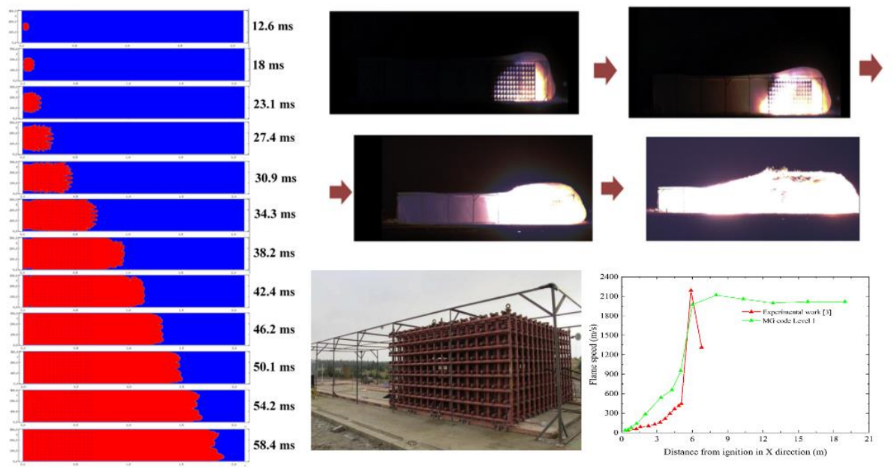Numerical Modelling of Hydrogen Explosions in semi-Confined Spaces
- Academic lead
- Dr Junfeng Yang, School of Mechanical Engineering, J.Yang@leeds.ac.uk
- Industrial lead
- Dominic de’Ath, Sellafield Ltd., dominic.death@sellafieldsites.com
- Co-supervisor(s)
- Dr Timothy Hunter, School of Chemical and Process Engineering, t.n.hunter@leeds.ac.uk, Prof Michael Fairweather, School of Chemical and Process Engineering, M.Fairweather@leeds.ac.uk, Dr Xiaoan Mao, School of Chemical and Process Engineering, X.Mao@leeds.ac.uk
- Project themes
- Industrial Processes, Underpinning Methods for Fluid Dynamics
There are many instances where hydrogen generated from nuclear waste (via radiolysis) and accumulates within vessels or product containers at nuclear facilities. Mixed with air, these have the potential to ignite and result in harmful or damaging overpressures via deflagration or detonation. In confined scenarios, a detonation could damage the containment system, which would result in the leakage of radioactive material and potential hazards to the environment. In unconfined scenarios often a detonation will not develop, but the initial flame acceleration and the generated over-pressure can be harmful to people nearby.
Computational Fluid Dynamics is widely used to simulate the large scale fire hazards [1]. This technique offers a convenient means of studying hydrogen deflagration and detonation in confined space with complex geometries and contains many obstacles which would promote turbulence linked to scenarios
within nuclear plants. The use of CFD allows a wider range of scenarios to be studied quantitively than could be done experimentally. A comparison of CFD modelling (2D Level 1 mesh by MG code) and experimental measurement for ethane explosion in large scale (20 m x 6 m x3 m) confined space is presented in Figure 2.
This project aims to develop tools for assessing the potential for DDT and the subsequent overpressures from the deflagration or detonation which may occur. The outcomes of project could provide significant improvements to safe operations and safety case development for nuclear decommissioning.

Fig 1 Comparison of CFD modelling (Left) [2] with experimental measurement (Right) [3] of large scale ethane explosion in confined space.
References
[1] Oran, E. S., Chamberlain, G., & Pekalski, A. (2020). Mechanisms and occurrence of detonations in vapor cloud explosions. Progress in energy and combustion science, 77, 100804.
[2] J. Li, Deflagration to Detonation Transition with Increased Reactivity of Combustible Mixtures, PhD Dissertation, School of Mechanical Engineering, University of Leeds, 2023.
[3] Pekalski, A., Puttock, J., & Chynoweth, S. (2015). Deflagration to detonation transition in a vapour cloud explosion in open but congested space: Large scale test. Journal of Loss Prevention in the Process Industries, 36, 365-370.
